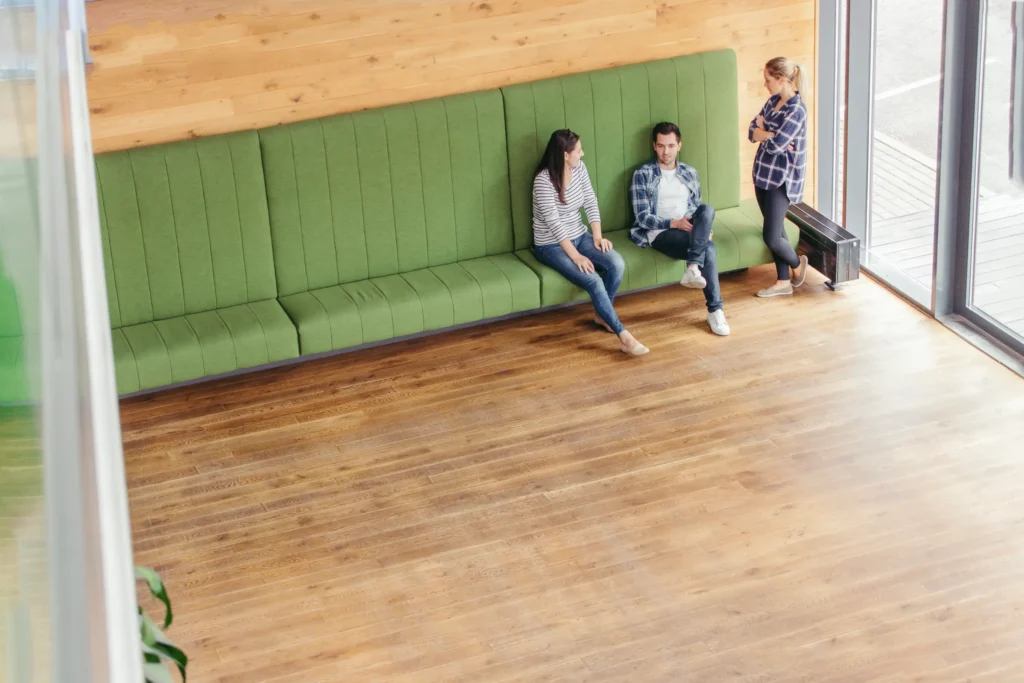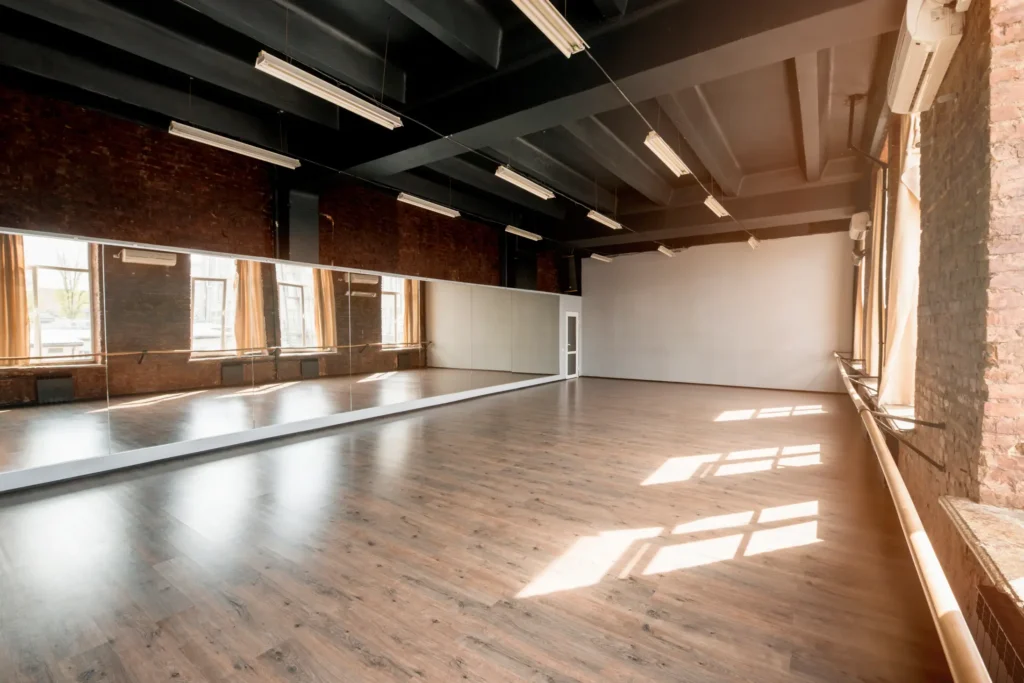- Free Estimates

Key Takeaways✔ Quality engineered hardwood should be clearly labeled, show a real wood top layer, and list basic construction specs. ✔ Stronger options have a thicker wear layer (around 3mm+) and a tight, multi-layer plywood or HDF core. ✔ Good planks lock together easily, sit flat, and have a smooth, even, UV-cured finish. ✔ Higher grades offer thicker wear layers, more stable cores, cleaner grain, and longer planks. ✔ With quality construction and proper care, engineered hardwood can often last 20–40 years. |
If you can spot quality in the showroom, you can avoid years of squeaks, scratches, and buyer’s remorse.
Engineered wood has become the top choice for many buyers—capturing about 50.5% of the market in 2024—which means there’s a lot of it on display, but not all of it is built to handle real life in a busy home or commercial space.
Walking into a flooring showroom is a bit like walking into a car dealership: everything looks shiny and perfect, and it’s hard to tell what’s truly durable.
The good news is that with a simple checklist, you can quickly sort out the “pretty but cheap” options from the engineered hardwood that’s genuinely built to last.

Before anything else, make sure you’re actually looking at engineered hardwood and not laminate or vinyl. Engineered hardwood (also called engineered wood) has a real hardwood top layer over a multi-layer wood or HDF core made from bonded wood fibers, veneers, and strands—often including wood waste. You get the natural look of wood with added stability and a more resource-efficient, low-emission option for both homes and commercial properties.
In the showroom, ask:
If the salesperson can’t clearly explain what’s in the plank, move on. Transparency is your first sign of quality.
This is where you separate long-lasting engineered wood flooring from the stuff that’s built to hit a price point.
✔ Check the Wear Layer (Aim for 3mm or More)
The wear layer is the real hardwood on top. It’s what you see, what you walk on, and what gets refinished someday.
In the showroom, you want to:
If the specs don’t list the wear layer thickness, ask directly. Quality manufacturers are proud of this number.
✔ Look at the Core Construction
Next, inspect the core. A high-quality plank will have:
This is what keeps boards from warping and cupping, especially in climates with seasonal humidity swings or in commercial spaces with heavy HVAC use.

A smooth flooring installation experience starts with precise milling and a durable finish—two things you can check before you ever sign a contract.
✔ Test the Fit of the Planks
Ask to lay 4–6 planks together right on the showroom floor:
If the planks fight you in the showroom, they’ll fight your installer on-site—and that often leads to squeaks, gaps, and callbacks.
✔ Examine the Finish and Grain
Then, inspect the surface:
Yes—and you can usually see it.
Higher-grade engineered hardwood typically offers:
Entry-level options may still be fine for low-traffic guest rooms or short-term rentals, but for main living areas or commercial lobbies, the higher grade is almost always the better value over time.
With a solid construction, proper installation, and basic maintenance, engineered hardwood floors can last 20–40 years or more. Lifespan depends on:
In residential homes, good engineered wood can easily outlast a couple of paint jobs. In commercial settings, you’ll get more years before the space starts to look tired and in need of replacement.
Ask for cut samples, compare the wear layer and core side by side, then lay a few planks to see how tightly they lock and how consistent the finish and grain look. Check which one offers the stronger warranty and clearer installation guidelines.
A quality underlayment is usually recommended, especially over concrete or between floors, to help with sound, minor subfloor issues, and moisture. Always follow the manufacturer’s underlayment and installation instructions.
Yes, if you pick a thicker wear layer and a durable, low-sheen finish. Rugs, mats, and felt pads go a long way in reducing scratches and visible wear.
Many products are compatible as long as they’re clearly rated for radiant heat. Keep temperature changes gradual and follow the specified installation method so the floor can move safely.
Rubber flooring is better in spaces where impact and traction matter most, like gyms or play areas. It handles dropped weights, moisture, and heavy equipment with less worry about damage. If durability and low maintenance matter more than looks, rubber flooring is usually the smarter choice.
Patterson’s Flooring Company stands as a trusted residential and commercial flooring contractor in Patterson, NY, delivering licensed flooring installation, repair, and maintenance backed by local expertise. Home and business projects in Patterson, NY benefit from a dedicated team focused on quality results and a curated selection of flooring materials. For professional flooring services in Patterson, NY, contact Patterson’s Flooring Company today to schedule a consultation or showroom visit.